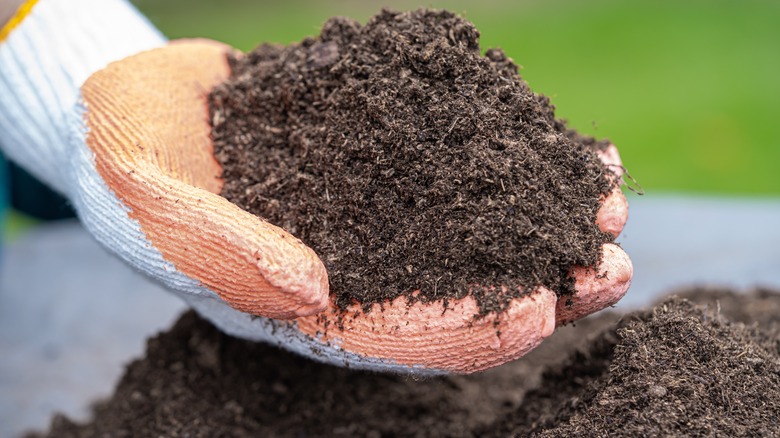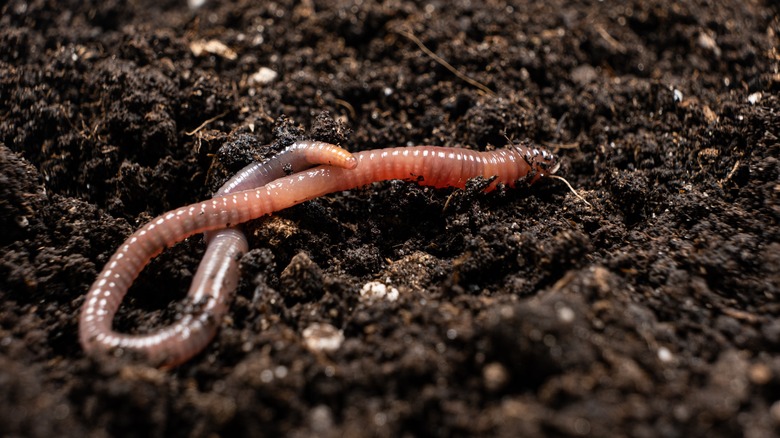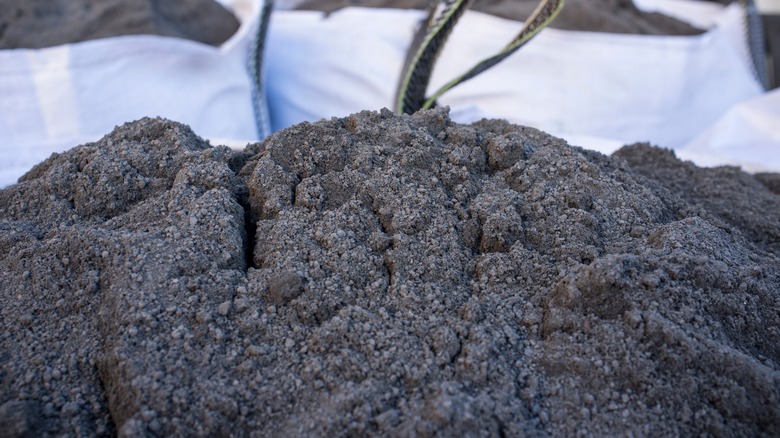How To Properly Store Topsoil At The End Of The Gardening Season
You may already know the importance of using healthy topsoil in your garden for the best results when growing vegetables or flowers. Sometimes, though, you may end up with extra topsoil at the end of the season. Storing it properly gives you the ability to use it again while maintaining its nutrients. Without proper storage, decay may occur at a faster rate than desired, meaning the nutrients disappear, making it less viable the following year. When you must store the topsoil for several months, keep it out of the rain and sun and away from ground moisture. Place a tarp underneath it to keep the underside of the pile dry. Airflow is important, so loosely use a tarp over the top to protect it from rain without smothering it, or store it inside a shed or garage.
If you plan to only store topsoil for a few weeks, you can take a different approach. As long as you not expecting to have heavy rainstorms — which will cause erosion or significant wind that could blow loose particles around — you can store the topsoil outdoors and uncovered. If you need to store it for several weeks before using it again, staking a tarp over the top to protect it from sun and rain is a good idea.
Why you need to store your topsoil properly over the winter
Topsoil can be expensive, carrying a price of up to $50 per cubic yard, so you'll want to preserve any extra material for the next growing season if at all possible. Don't store it in the same way you'd store potting soil, which you could leave in a sealed bag or in a sealed plastic container. Because topsoil includes living organisms and organic matter, it needs airflow to keep them healthy. Important organisms found in this material include earthworms, bacteria, and fungi. They help break down organic material to generate nutrients the plants need. If you're starting your own organic garden, just add compost to improve the amount of organic matter in your topsoil. Organic matter consists of broken-down material, such as dead plants, leaves, twigs, and dead insects, that's decomposing. It contains minerals and nutrients like phosphorus, nitrogen, potassium, and magnesium that the plants need for growing leaves and stems, while also encouraging photosynthesis.
Rain exposure can wash away or break down the nutrients and minerals found in topsoil that the plants need. They can leach out of the material when stored improperly — where moisture is excessive. Additionally, having too much moisture can encourage premature decay in the organic material, leaving it less useful for plants.
Can I store my topsoil in or near my garden?
You may not have a location where it's convenient to store topsoil over the winter. If so, you can store it in a pile just outside the bed of the garden or inside the garden bed itself. If you are planning to start a new garden or flower bed the following year, storing it outdoors is fine. To save some money, you may want to have it delivered in the fall and store it over the winter before using it the following spring. Before storing it, remove any stray rocks or wood that will end up under the pile that you do not want in the flower bed. You can place a tarp down during the late summer before you plan to plant the garden, which will kill any pathogens in the soil and weeds. Store the topsoil on the tarp, and then stake another tarp over the top of it.
If you simply want to preserve the topsoil you have already in place, add a cover crop like oats or add compost to make sure it's ready for next year.


